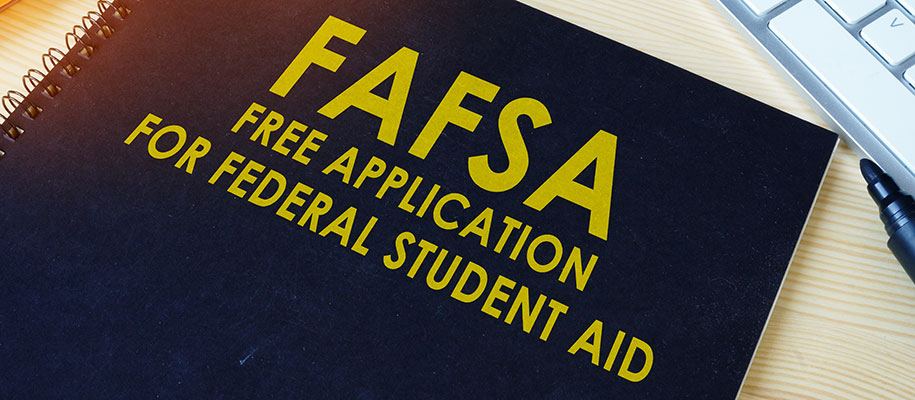College is a huge investment for many families, and most need some form of financial help to make it happen. If you’re looking for ways to pay for college, one of the first resources you should turn to is the Free Application for Federal Student Aid (FAFSA). Over the past couple of decades, the Department of Education has streamlined the financial aid application process, but questions can still arise. If you or your child are applying to college, here are five essential things you need to know about the FAFSA.
1. What is the FAFSA?
The FAFSA is a free annual form filled out by current and prospective college students in the United States to determine their eligibility for federal student aid. It can be filled out by undergraduate and graduate students. The FAFSA can determine your eligibility for federal grants (such as the Pell Grant), Federal Supplemental Educational Opportunity Grants (FSEOG), federal work-study programs, loans, and sometimes state or institutional scholarships.
Note: Starting with the 2024–2025 school year, the FAFSA has been redesigned to simplify the application process, so families may notice changes when filling it out.
Related: Check out the Best Advice and Resources for Filling Out the FAFSA here
2. What information does the FAFSA provide you?
After you file, the FAFSA provides you with a key index number known as the Student Aid Index (SAI), which colleges use to determine your financial aid eligibility. The SAI has replaced the Expected Family Contribution (EFC) starting with the 2024–2025 academic year. The information you report on the FAFSA is used to calculate the SAI, which is determined by a formula established by law.
The FAFSA also provides the Cost of Attendance (COA), which is the estimated amount it will cost a student to attend a particular school. Most colleges and universities calculate the COA to include tuition and fees, room and board, books, supplies, transportation, loan fees, and miscellaneous expenses. Some schools may also factor in costs related to disability services or reasonable expenses for study abroad programs.
3. Does everyone need to complete the FAFSA?
It’s not a requirement to fill out the FAFSA, but the short answer is, yes, you should. By not filling out the FAFSA, you could miss out on federal, state, and sometimes institutional aid provided by the US Department of Education. Students may be eligible for federal and state grants that do not need to be repaid, low-interest federal student loans, or work-study programs that help fund their education while building their résumés.
Many states and colleges also use FAFSA information to determine eligibility for their own aid programs, so filing is essential even if you think you won’t qualify for federal aid. Every student qualifies for some form of aid, and the form is free to complete, so it’s definitely worth filing.
Related: Don't be fooled by these 5 Simple Mistakes to Avoid on the FAFSA
4. How do I complete the FAFSA?
The FAFSA is available at fafsa.gov. To complete the form, students and families will need:
- Their Social Security number (or their Alien Registration Number for non-US citizens)
- Federal income tax returns, W-2 forms, and other records of money earned (from the prior-prior tax year)*
- Records of assets such as bank statements and investments
- Untaxed income records
- FSA IDs (for both the student and one parent, if dependent) to sign the document electronically
* As of 2024–2025, the FAFSA has introduced enhanced data-sharing features that allow families to import tax information directly from the IRS to streamline the process, but it is still recommended to keep this information on hand when completing the form to ensure all financial information is accurately reported.
5. What is the FAFSA deadline?
The federal deadline for completing the FAFSA is June 30 each year, though many schools have their own individual deadlines. For the 2024–2025 academic year, the FAFSA opened in December 2023 due to delays caused by recent system updates and simplifications. However, starting with the 2025–2026 academic year, the FAFSA will once again open on October 1, as mandated by the FAFSA Deadline Act signed into law by President Biden on December 11, 2024. This legislation ensures the FAFSA will be released on October 1 each year, providing students and families timely access to federal financial aid.
Families should complete the FAFSA as soon as possible, as many grants and scholarships (aka free money) are issued on a first-come, first-served basis. Most schools have limited funds, so students have a better chance of receiving aid if their FAFSA is submitted early.
Related: Here are the Top 10 Things to Remember Before Filing the FAFSA
Every student qualifies for some form of student aid, so make sure you don’t skip this important step of the college admission process. There’s no harm in filing the FAFSA—“free” is in its name, and you never know what type of financial aid you may qualify for. Be sure to apply early and reapply every year you or your child is in college—good things come to those who don’t wait!
Some of the schools on your student's college list may use another financial aid form. Learn all about it with our article on What You Need to Know About the CSS Profile.





